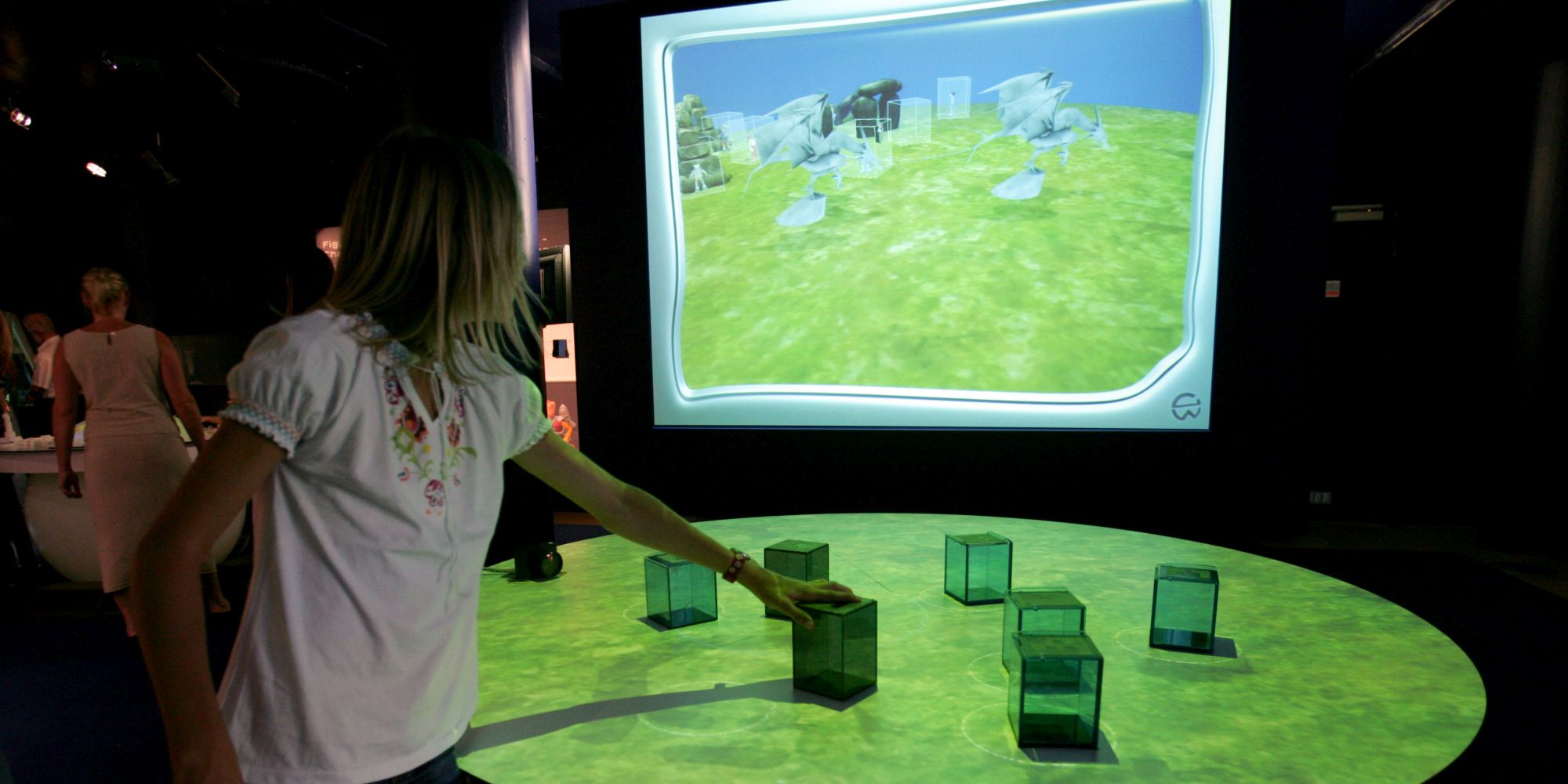The theme of Gulliver’s World is the relationship between virtual and material realities, and the reality that’s constructed by combining these two components.
The first permanent exhibition based on mixed-reality technology was Hidden Worlds produced for the 2002 Ars Electronica Festival. The following year, the Ars Electronica Futurelab worked together with Prof. Hirokazu Kato of Osaka University to expand the scope of this R&D project.
For the 2003 Ars Electronica Center Exhibition, they developed Gulliver’s Box, likewise a multi-user mixed-reality system, and it’s been entertaining visitors from a wide variety of backgrounds ever since. Gulliver’s Box was originally conceived as an experimental platform that could be used to test new interfaces and approaches to interaction in both a lab setting and in everyday operations involving the general public. But in spite of the installation’s prototype nature, Gulliver’s Box developed into one of the Museum of the Future’s top attractions. The experience gained in this exhibition context led to insights that made important contributions to the work being done at the Ars Electronica Futurelab. Motivated by this success, the lab’s staff took up the concept and spun it off in several directions.
The most innovative feature of Gulliver’s World is undoubtedly the fact that visitors no longer interact with prefab environments and standard characters, but rather are called upon to design the artificial world and its components themselves. To enable them to do so, the Futurelab developed intuitive editors so that the environment can be individually customized and repeatedly reconfigured. In their dealings with the individual interfaces, visitors are conducted through the various levels of interaction in the mixed-reality environment.
Credits
Concept: Christopher Lindinger, Roland Haring, Peter Freudling, Andreas Jalsovec, Horst Hörtner, Dietmar Offenhuber, Nina Wenhart, Hirokazu Kato
Development: Roland Haring, Christian Naglhofer, Christopher Lindinger, Stefan Feldler, Thomas Grabner, Christine Gruber, Daniel Leithinger, Robert Praxmarer, Rudolf Hanl, Martin Sturm
Modelling and Animation: Andreas Jalsovec, Peter Freudling, Christine Pilsl, Martin Bruner
Exhibition Design: Peter Freudling, Christopher Lindinger, Roland Haring
Project Management: Christopher Lindinger, Roland Haring
Special thanks: Eric Sommerlade, UZR GmbH & Co KG


